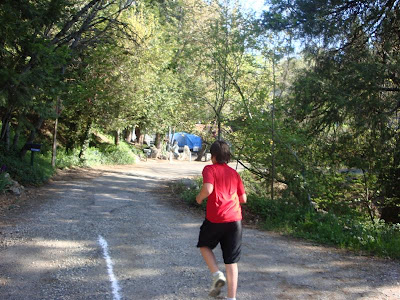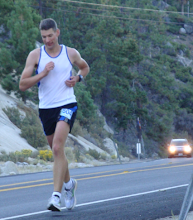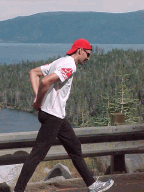 It's that time of year again! Nike released yet another update to the lightweight Air Zoom Vomero+ (part of the Bowerman line of shoes). The Air Zoom Vomero has been my favorite shoe since 2006.
It's that time of year again! Nike released yet another update to the lightweight Air Zoom Vomero+ (part of the Bowerman line of shoes). The Air Zoom Vomero has been my favorite shoe since 2006.For me, it's a reminder that the Tahoe Super Triple is coming up again.
Note: you can sign up for the Triple now with a 14% discount using the "MayStimulus14" promo code.The Vomero versions line up nicely with the Tahoe Super Triple editions. I ran the inaugural Super Triple (2006) in version 1 of the shoe, the second in version 2, and I set last year's course record (20:32) in version 3. This year, I plan to break that record again in version 4 of this super comfortable shoe, which has become a sort of lucky charm (aiming for a sub-19 finish).
I tried out my brand new pair of Nike Air Zoom Vomero 4s at the recent Spring Run 10K in Nevada City and they did not disappoint. I did not like Air Zoom Vomero version#3 as much as version#2, but version#4 feels as comfortable as version#2 again, with an even better fit. My version#3 shoes (and I wore quite a few pairs) wore out faster than version 2. Since I only just bought the new version, it is too early to tell how these will hold up.
Here is my review:
- Cushiness: Excellent. Or, as Sean Meissner likes to call it, "uber-excellent!")
- Fit: Excellent. This shoe is ready to race the minute you put it on.
- Toughness: Good. This shoe is not super-protective, but the cushioning protects the bottom of your feet really well.
- Flexibility: Excellent. This shoe is very flexible.
- Side-to-side Stability: Excellent. This shoe is very light but still provides the excellent side-to-side stability you would expect in a road shoe. This part was better in version 2, not as good in version 3, but back again in version 4.
- Grip: Good. This shoe handled great on the road and dry trails. They are not trail shoes, but to give you an idea, I ran the entire 165-mile Tahoe Rim Trail in one go in one pair of Air Zoom Vomero #2s (I picked them mainly for the light weight and superior cushioning).
- Switchback Handling: N/A. I have not taken this out on the trail yet, but this should be OK.
- Weight: Excellent. This is the lightest shoe I have come across that you can ultra-distance road and trail distances on.
- Price: OK. A bit high at $130, but worth every penny of it. Check the Nike outlet stores for better prices. Nike sales reps: contact me for my "free samples" mailing address ;-)
- Overall: This is a great update!
Version 4 is not on Amazon yet, but here are some links to some good deals on versions 2 & 3






















